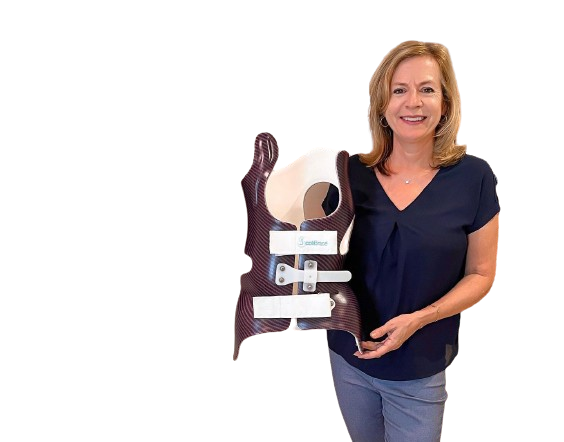Daily Habits That Ease Back Strain from Long Commutes [Updated for 2025] Long commutes can take a real toll on your back. Hours spent in a car or train, day after day, leave many people battling sore muscles and stiff joints. The good news? Simple, daily habits can lower your risk of pain and cut down on discomfort.
This post covers easy steps you can build into your routine—supported by research and expert advice. From setting up your seat for healthy posture to quick stretches and mindful movement, you’ll get practical tips that fit even the busiest schedule. Small changes make a big difference when your goal is to stop back strain before it starts.
Understanding Back Strain from Long Commutes
Sitting for most of your commute can feel like giving your back a daily test of patience. When you log hours in the car, bus, or train, your spine and muscles pay the real price. It’s more than just feeling stiff once you arrive—repeated, long stretches of sitting actually change how your body works and can set you up for ongoing back pain. To stop this cycle, understanding why these aches start is the first real step.
 Photo by Kindel Media
Photo by Kindel Media
How Prolonged Sitting Impacts Your Spine
When you’re stuck sitting, pressure on the lower back (lumbar spine) increases far beyond what you’d get from standing or walking. Here’s what actually happens:
- Compression of spinal discs: Remaining seated pins your vertebrae closer together, squeezing the discs and wearing them down.
- Slumped posture: Over time, sitting shapes your body. Most people slouch or lean, which throws your spine’s natural curves out of line.
- Restricted blood flow: Sitting slows the flow of blood to your spine and muscles, making it harder for them to get nutrients and repair everyday wear and tear.
- Muscle fatigue: The muscles that hold your posture get tired, forcing smaller stabilizing muscles to overwork.
The result is more than a sore back. You risk disc problems, pinched nerves, and even early degenerative changes in your spine. Even the strongest core can’t protect your back if it’s under constant stress for hours at a time.
Common Risks: More Than Just Stiffness
A little stiffness after a long drive is common. But with daily commutes, you might face bigger issues:
- Chronic muscle stiffness: Muscles don’t get the chance to stretch or move, so they adapt by becoming tight and less flexible.
- Postural imbalances: Tight hip flexors and weak glutes from too much sitting lead to an unstable pelvis and spine.
- Nerve irritation: Poor posture or compression can inflame nerves, causing sharp or radiating pain—sometimes even down your legs.
- Increased injury risk: With each day spent in a seated position, the spine becomes less supported and more prone to sprains or disc injuries.
People who sit more than six hours a day have much higher rates of back pain, muscle wasting, and may even see faster bone loss.
Why Daily Habits Matter for Relief
The effects of commuting aren’t just something you have to accept. Step-by-step, small changes cut through the damage—little actions done often keep your body stronger and more flexible. Building habits to reset your posture and stay active can:
- Prevent chronic pain from taking hold.
- Restore balance to stiff and weak muscle groups.
- Keep circulation moving so your spine gets the nutrients needed for healing.
- Lower your chance of injuries during daily movement or workouts.
Getting into a routine doesn’t need to be complicated. Even a handful of mindful changes, repeated often, make your back more resilient to the daily strain of long commutes.
Ergonomic Adjustments for Car, Bus, and Train Commutes
Finding a comfortable seat on your commute can make or break your day—and your back. Many people spend hours every week in transit, but small tweaks to your seat setup can turn those hours into something your spine can handle. Whether you’re commuting by car, bus, or train, paying attention to ergonomics helps protect your back from long-term pain.
Optimal Seat Positioning: Where Comfort Begins
Seat setup matters more than you think. The right adjustments keep your spine in its natural shape, reduce pressure on your joints, and help you arrive feeling refreshed instead of stiff.
- Seat Height: Your thighs should rest comfortably on the seat, with your knees just below hip level. Leave a 2-3 finger gap between the back of your knees and the edge of the seat so your legs don’t get pinched. In buses and trains (where height is fixed), aim to keep your feet flat on the floor or on a portable footrest to reduce strain.
- Distance from Pedals or Ground: Slide your seat forward until your knees bend slightly when pressing the pedals (in cars), or until your feet rest flat with ease on buses and trains. Stretching too far strains your lower back.
- Seat Angle: Lean the seatback just past upright—about 100-110 degrees. A slight recline eases pressure on your lower back but still supports your posture.
- Back and Thigh Support: Make sure your back is fully supported and your thighs aren’t floating off the seat. If the seat doesn’t support your lower back, add a cushion or roll up a jacket behind you.
- Adjust Steering and Mirrors (for drivers): Bring the steering wheel closer (about 10-12 inches from your chest) to relax your arms and shoulders. Make small changes to mirrors so you don’t have to lean or twist your neck.
 Photo by Pixabay
Photo by Pixabay
Lumbar and Neck Support Solutions: Your Commuter Toolkit
Modern commuter seats don’t always fit every back. That’s where smart support tools come in.
- Lumbar Pillows: Portable memory foam or mesh lumbar cushions help maintain your natural lower back curve. Look for ones with adjustable straps for stability whether you’re in a car, train, or bus.
- Improvised Aids: Don’t have a lumbar pillow? Use a rolled-up jacket, towel, or even a small bag. Place it at the curve of your lower back for quick support.
- Neck and Headrest Position: The top of the headrest should be level with the top of your head, and it should sit close enough to just touch the back of your head. Never drive with the headrest far behind you—this strains your neck, especially in a crash.
- Built-In Supports: Many newer cars include adjustable lumbar support—don’t forget to use it. If you’re riding public transit, bring a slim, lightweight cushion that won’t be a hassle to carry.
- Seat Belt and Accessories: Make sure the seat belt crosses your shoulder (never your neck) and lies flat. Remove objects from your back pockets (wallets, phones) before you sit—these can tilt your hips and stress your lower spine.
Posture Check Routines While Commuting
Commuting is not the time to set-and-forget your posture. Small posture resets during your ride go a long way to ease back strain.
Try this easy routine every 20-30 minutes (or at each stoplight, station, or break):
- Press Hips Back: Scoot your hips all the way back in the seat.
- Adjust Lower Back: Check that your support (pillow, towel, or cushion) lines up with your natural lumbar curve.
- Relax Shoulders: Drop your shoulders away from your ears. Shake out tension from your neck.
- Rest Feet Flat: Plant both feet on the floor or footrest. Avoid crossing your legs for long stretches.
- Head and Neck: Position your head over your shoulders, with ears lined up above them—not jutting forward.
- Take Micro-Movements: Wiggle your toes, shift your weight, or squeeze your shoulder blades together for a few seconds. Even small moves help, and they keep your blood circulating.
Frequent repositioning matters because static postures increase muscle fatigue and slow blood flow. Every quick check-in helps hit the “reset” button on your posture—and the habit will follow you after you get out of your seat too.
Building these habits, one commute at a time, will help your back thank you—every step of the way.
Daily Movement and Stretching Routines for Commuters
Adding simple movement and stretching into your routine can break the cycle of stiffness after long hours on the road or train. You don’t need a gym or fancy equipment—just a few mindful minutes, either on the go or once you reach your destination. Regular stretches not only relieve tight muscles and aching joints, they also restore blood flow and make sitting less stressful on your back and hips. Let’s look at practical routines commuters can use anytime, anywhere.
Effective Car and Transit-Friendly Stretching Techniques
It’s possible to fit in effective stretches even when you’re stuck in a seat. These moves target the key areas most affected by long periods of sitting: your lower back, neck, shoulders, and legs.
- Seated Spinal Twist: Sit tall with both feet flat. Gently twist your torso to one side, holding the seat or your knee for support. Hold for 15-20 seconds, then switch sides. This stretch relieves tension along your back and supports mobility.
- Shoulder Rolls: Raise your shoulders up towards your ears, then roll them back and down in a circular motion. Repeat 10 times. This movement wakes up your neck and upper back and resets tense muscles.
- Knee-to-Chest Stretch: If space allows, keep one foot flat and pull your opposite knee up toward your chest while seated. Hug it close for a few deep breaths, then switch. This can ease tension in your hip and lower back.
- Neck Stretches: Lower your right ear toward your right shoulder, feeling the stretch along the side of your neck. Hold 10 seconds, then switch. You can also gently turn your head left and right. These reduce stiffness from looking at screens or being on high alert while driving.
- Ankle Pumps: With both feet on the floor, alternate between lifting your heels and your toes. Repeat for 20 reps. This boosts circulation, cuts down on swelling, and keeps leg muscles from tightening.
Even when you can’t stand up, these micro-movements keep blood flowing and help “reset” your body so you’re less sore when you finally arrive.
At-Home or Office Stretching for Commuters
Once you get out of your seat, simple stretches can undo some of the strain from sitting. Focus on your hips, hamstrings, back, and core—these areas tighten most from daily commuting.
 Photo by Pavel Danilyuk
Photo by Pavel Danilyuk
Try this routine once you get home or arrive at your office:
- Hamstring Stretch: Stand with feet hip-width apart. Place one heel on a low chair or bench, keep your knee straight, and lean forward from your hips until you feel a stretch in the back of your leg. Hold 20-30 seconds and repeat for the other leg. Flexible hamstrings reduce pressure on your lower back.
- Cat-Cow Stretch: On all fours, alternate arching your back (cat) and dropping your belly while lifting your head and tailbone (cow). Move slowly for 6-8 cycles. This sequence loosens the spine and improves flexibility.
- Bridges: Lie on your back with knees bent, feet flat and hip-width apart. Press your feet down to lift your hips off the ground, making a straight line from shoulders to knees. Hold for a few seconds, lower, and repeat 10-15 times. Bridges activate your glutes and core, balancing out tight hip flexors.
- Hip Flexor Stretch: Kneel with one foot forward and the opposite knee on the floor. Gently shift your weight forward until you feel a stretch in the front of your hip. Hold 20-30 seconds and repeat on the other side. Stretching the hip flexors is key for undoing hours of sitting.
You don’t need special gear for these moves. Just a mat or towel and a few spare minutes. Building a habit of regular stretching—before, during, and after your commute—guards your back against ongoing strain and can help you stay comfortable through even the longest trips.
Building Strength and Endurance for Long-Term Relief
Sitting for hours on your commute can wear down your body’s support systems. Over time, this leads to aches that linger, even after you get out of the car or off the train. The secret to lasting relief isn’t chasing muscle bulk—it’s building strength and endurance in the muscles that hold your spine steady. Unlike old-school gym workouts focused just on raw power, endurance-based core training spotlights stamina. Think of it as giving your back a steady anchor that keeps your posture in line all day.
Targeted exercises for posture and fatigue resistance help your muscles outlast long commutes. This way, you’re not just strong for a few minutes in the gym—you’re protected for the hours you spend seated. Let’s break down what really works.
Core Stabilization Exercises: Planks, Seated Core, and Pelvic Tilts
 Photo by Ketut Subiyanto
Photo by Ketut Subiyanto
Building up your core isn’t only about getting a six-pack. The deep abdominal muscles, lower back, and even your hips all work together to hold your spine upright—especially important when you’re sitting for long stretches.
Here are the most effective and practical moves:
- Planks (Classic or Modified):
- Start face down, supporting your weight on your forearms (or hands for a high plank) and toes.
- Keep your body straight from head to heels—don’t let your hips drop or rise.
- Hold the position, breathing steadily, for 15–45 seconds. Rest and repeat up to 3 times.
- Seated Core Squeezes:
- Sit tall at the edge of your seat with feet flat on the floor.
- Draw your belly button toward your spine, engaging your lower abs without holding your breath.
- Hold this gentle squeeze for 10–20 seconds, then release. Repeat 4–5 times throughout your commute or at work.
- Pelvic Tilts:
- Lie on your back with knees bent and feet flat (or do it seated with your back against the seat).
- Gently rock your pelvis to flatten your lower back against the floor or seat, tightening your abs.
- Hold for 5–10 seconds, then relax. Repeat 8–10 times.
Consistency with these moves is what creates true muscle endurance. They train your core to fire up and protect your spine, rather than letting posture “collapse” as you get tired—meaning fewer aches by the end of the day.
Upper and Lower Back Conditioning: Wall Angels, Back Extensions, and Scapular Retractions
Some exercises do more than just stretch; they strengthen all the muscles that keep your upper and lower back firm during long commutes. Focusing on these areas takes the strain off your spine, fights muscle fatigue, and can help prevent chronic pain.
Try adding these simple movements to your daily routine:
- Wall Angels:
- Stand with your back against a wall, feet a few inches away.
- Press your lower back, shoulders, and head flat against the wall.
- With elbows bent, slide your arms upward against the wall as if making a snow angel, then lower back down.
- Keep everything touching the wall if you can. Do 10 slow reps. This works the muscles that keep your shoulders open and your posture upright.
- Back Extensions (Supermans):
- Lie face down on the floor with arms stretched out in front.
- Lift your chest and arms off the floor a few inches, squeezing your shoulder blades and glutes.
- Hold for 2–3 seconds, lower down, and repeat 10–12 times.
- This targets the lower back and glutes, supporting the muscles that keep you tall when sitting.
- Scapular Retractions:
- Sit or stand tall. Pull your shoulder blades back and down, as if you’re tucking them into your back pockets.
- Hold for a count of five, then relax. Repeat 10–12 times.
- This move helps reset rounded shoulders and trains the upper back to resist slouching.
If you stick with these simple exercises, you’ll notice less tightness, more comfort, and better support everywhere from your shoulders to your lower back—even late in the day. That’s real back protection you can count on, both in and out of your commute.
Lifestyle Habits that Complement Physical Practices
There’s more to keeping your back happy than just good posture and stretching. Supportive daily routines—like what you eat, how you hydrate, and how you carry your work bag—quietly play a major part in keeping back strain in check. Overlook these “background” habits, and even the best exercises won’t make up for it. Here’s how simple lifestyle tweaks can bring you real, lasting comfort on long commutes.
Hydration, Nutrition, and Mindful Breaks
Staying hydrated is like giving your spinal discs a drink—they need water to stay soft, shock-absorbent, and ready for hours of sitting. If you skimp on water, those discs dry out and you’ll feel more sore, especially after a long trip.
- Keep a water bottle within reach on your commute or at your desk. Sip regularly, aiming for at least 6–8 cups of water throughout the day.
- If your job or routine means lots of caffeine, make up for it with extra water—caffeine pulls water from your body, drying out your tissues.
- Choose snacks that nourish your muscles and joints. Nuts, fruits, yogurt, and lean proteins help fight inflammation and support muscle recovery after static sitting.
Sitting for long stretches stiffens everything up, but short activity breaks are game changers.
- Stand or take a walk every 20–30 minutes, even if it’s just down the hall or up a flight of stairs.
- Schedule reminders on your phone to prompt movement—don’t rely on willpower alone.
- Use mindful breaks for a slow stretch, deep breathing, or a quick reset outside. Even 2–3 minutes can make a difference.
All these habits add up: strong nutrition and regular movement keep your muscles ready to support you through any commute.
Work Bag and Backpack Ergonomics
A little care in how you carry your daily essentials can mean the difference between a pain-free back and a sore one.
- Go for a two-strap backpack instead of a single-strap shoulder bag. Backpacks spread weight evenly and keep your spine aligned.
- Adjust both straps so the bag sits high on your back, not slumping toward your hips.
- Keep your bag light—aim for no more than 10–15% of your body weight.
- Place heavier items close to your back in the backpack’s main compartment, not hanging out in front or on one side.
- Use wider, padded straps whenever possible to avoid digging into your shoulders.
- If you must use a single-strap bag, switch sides regularly to avoid one-sided muscle strain.
- When lifting your bag, bend from your knees and hips, not your back.
And remember, never keep your wallet or phone in your back pocket while you sit—it throws off your spine and leads to pelvic misalignment.
When to Seek Professional Help
Most small aches get better with supportive habits, but some issues need an expert’s care. Don’t ignore:
- Persistent back pain that lasts more than a couple of weeks, or keeps you up at night
- Pain that runs down your leg (sciatica symptoms), or causes weakness, tingling, or numbness
- Sudden, severe back pain after an accident, slip, or fall
- Trouble controlling your bladder or bowels—this needs immediate attention
If you check any of these boxes, reach out to a chiropractor, physical therapist, or your doctor. The right pro can spot what self-care can’t, craft a safe recovery plan, and point you toward the best treatments or referrals.
 Photo by cottonbro studio
Photo by cottonbro studio
Strong habits and early checks help you stay ahead of issues—so when your back needs backup, you’re ready.
Conclusion
Small habits stack up to protect your back in ways you notice every day. Setting up your seat for better posture, stretching before and after your ride, moving throughout the day, and using the right bag all fight off the aches that come with long hours of sitting. Eating well and drinking enough water also help keep your spine in good shape.
Daily routines don’t need to be time-consuming or complicated to work. Adding just a few of these habits can help you show up less sore and more comfortable, both during your commute and when you arrive. The more often you practice, the more your back will thank you—now and down the road.
Make one simple change today. Your future self will feel the difference. If you’ve found tips that work, share them with others or let us know what’s helping you. Thanks for reading and giving your back the attention it deserves!







